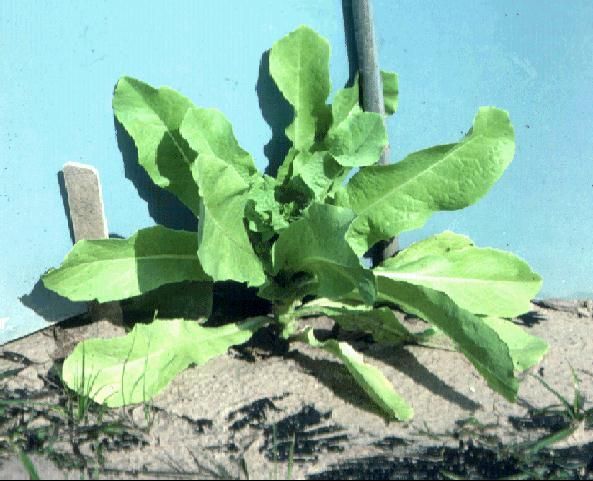Celtuce—Lactuca sativa var.asparagina L.1
Celtuce is known also as stem lettuce, celery lettuce, and asparagus lettuce. It looks like a cross between celery and lettuce. This type of lettuce is grown for the edible enlarged seed stalk. The outer leaves resemble loose leaf lettuce but are a lighter green. These leaves may be eaten in salads at a young tender stage. However, they become bitter and unpalatable rather quickly owing to the formation of a milky sap.
Soon after the development of the outer leaves, a central stalk bearing tiny leaves at the top starts to elongate. Allowed to grow, this flower stalk will reach 4 to 5 feet in height. It acts very much like regular lettuce bolting to seed. The outer edges of the round stem contain the bitter milky sap.
Use
When the stem is about 12 to 18 inches long, cut into the leafy portion of the plant, being sure to peel the outer skin, to remove the portion containing the bitter sap. The soft, translucent green central core is the edible part. It may be eaten fresh, either sliced or diced into a salad. The flavor is somewhat like a cucumber, yet different. In China, where it is grown in commercial quantities, the fleshy stem is cut into sections and cooked by broiling or stewing.
Culture

Credit: James M. Stephens
Celtuce is rarely grown in Florida gardens, but it has been observed to do fairly well in trials, at least in the growth of the leaves. Since it is a cool weather crop, it should be planted from seed in the fall, winter, or early spring, spaced at about 8 inches in the row, and treated like regular lettuce. Many seed catalogs advertise this seed for sale.


